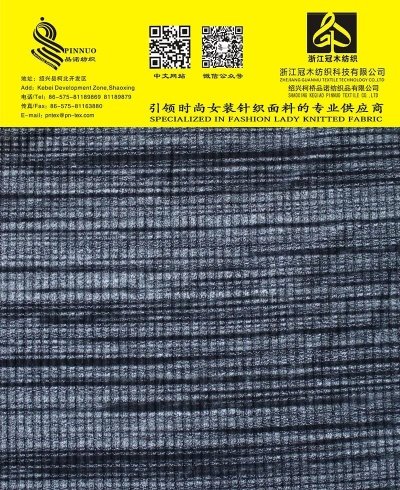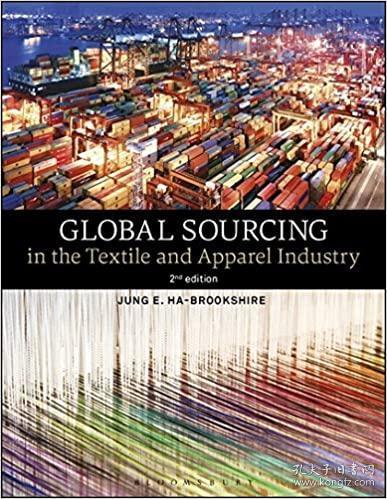Strategies for Selecting a Suitable Location for a Textile Company
"In the process of establishing a textile company, choosing the right location is crucial for its success. Factors such as labor cost, raw material supply, market demand, and transportation convenience should be taken into account when selecting the optimal location. Additionally, government policies and regulations should also be considered to ensure that the company complies with all legal requirements."
Introduction: In today's competitive business landscape, the location of a textile company can have a significant impact on its success. A good location can help attract customers, increase market share, and boost productivity. However, finding the perfect spot requires careful consideration of various factors such as cost, accessibility, labor supply, competition, and regulatory environment. In this article, we will explore some key considerations when selecting a suitable location for your textile company.

Factors to Consider:
-
Cost of Living and Labor: One of the most important factors is the cost of living and labor in the area where you plan to establish your company. This includes rent, utility costs, transportation expenses, and wages for employees. By researching these costs and looking for areas that offer reasonable wages and low overhead, you can ensure that your business will be financially viable. For example, consider the cost of living in a specific region versus other cities or countries where your target customers are located.
-
Accessibility: The location should be easily accessible to customers and suppliers. Good transportation links are essential for both logistical and time-efficient operations. Look into public transportation options like buses or trains, as well as potential road access to major highways or airports, which can enhance customer reach and reduce transportation costs.
-
Competitive Landscape: Analyzing the competitive landscape in the area where you want to locate your company can also be crucial. Look at local competitors and industry trends to determine if there is an oversupply of products or a lack of demand. If there is too much competition, look for areas with lower levels of competition or unique selling points that differentiate your company from others.
-
Regulatory Environment: Finally, the regulatory environment is another critical factor to consider. Different regions may impose different rules and regulations related to safety standards, environmental protection, and labor rights. It's important to check if the location has favorable regulations for manufacturing textiles, such as minimum standards for working conditions, health and safety protocols, and waste disposal regulations.
Example Case Study: One textile company that found success by choosing the right location is the Pima County, Arizona-based Sun City Trading Co. They established their company in a rural setting near Phoenix, but they carefully evaluated the cost of living, labor availability, and transportation options before making a decision. The city had a low cost of living compared to other major metropolitan areas, making it a good option for their production needs. Additionally, the area was close to major highways and airports, which made it easier for them to transport raw materials and products to customers. Despite facing some challenges with labor availability and regulation issues in the early stages of operation, the company adapted and continued to grow successfully over time.
Conclusion: When selecting a location for a textile company, it's essential to consider various factors that influence cost of living, labor supply, accessibility, competitive landscape, and regulatory environment. By conducting thorough research and analysis, companies can find the right location that meets their operational goals and maximizes their profitability. As the Sun City Trading Co. case study shows, patience, flexibility, and a willingness to adapt can help navigate challenges in the initial stages of establishing operations while still achieving long-term success.
纺织品公司选址概述

随着市场竞争日益激烈,纺织品公司的选址策略显得尤为重要,一个合适的选址不仅能为企业带来经济效益,还能提升品牌影响力,本文将围绕纺织品公司如何选址展开讨论,并提供相关案例分析。
选址策略考虑因素
- 市场潜力与需求分析:了解目标市场的经济发展状况、消费水平、人口结构等因素,以便确定适合的地理位置。
- 交通便利性:考虑交通线路的便捷程度,包括公共交通、铁路、公路等,确保货物和员工能够快速到达。
- 土地成本与租赁政策:评估土地价格、租赁政策等因素,确保公司能够承担得起合适的成本。
- 生态环境与可持续发展:关注当地生态环境保护政策,选择符合可持续发展的地点。
案例分析
某纺织品公司选址策略
某纺织品公司近年来在某城市成功选址,主要考虑因素包括市场潜力、交通便利性、生态环境与可持续发展,该公司选择靠近主要交通干线附近的位置,便于货物运输和员工上下班,该地区生态环境良好,有利于企业可持续发展,该公司还关注当地政策法规,选择符合当地需求的地点进行投资。
纺织品公司选址案例分析表格
| 选址因素 | 具体描述 | 案例分析结果 |
|---|---|---|
| 市场潜力 | 该地区经济发展状况良好,消费水平较高,人口结构稳定 | 该地区市场潜力巨大,符合公司发展需求 |
| 交通便利性 | 该地区交通便利,有完善的公共交通网络和铁路、公路等交通线路 | 公司货物和员工能够快速到达,提高运营效率 |
| 土地成本与租赁政策 | 该地区土地价格适中,租赁政策合理,有利于公司长期发展 | 公司能够承担得起合适的成本,实现可持续发展 |
| 生态环境与可持续发展 | 该地区生态环境良好,符合当地生态环境保护政策 | 公司注重生态环境保护,实现绿色发展 |
选址建议
- 市场调研与分析:在选址前,纺织品公司应进行充分的市场调研与分析,了解目标市场的需求和趋势。
- 综合考虑多个因素:在选址过程中,纺织品公司应综合考虑多个因素,包括地理位置、交通便利性、土地成本、生态环境等。
- 选择合适的地点:在确定选址后,纺织品公司应选择合适的地点进行投资,确保公司能够获得经济效益和品牌影响力。
纺织品公司的选址是公司发展的重要一环,在选址过程中,纺织品公司应综合考虑多个因素,包括市场潜力、交通便利性、土地成本、生态环境等,纺织品公司还应关注当地政策法规,选择符合当地需求的地点进行投资,通过合理的选址策略和措施,纺织品公司可以更好地满足市场需求,提高运营效率,实现可持续发展。
Articles related to the knowledge points of this article:
Embracing Innovation:The Journey of Shaoxing Jingsi Textiles
The Essential Guide to Textile Export Coding
A Glimpse into the Dynamics of Suzhou Silk and Dyeing Market
The Fabric of Innovation:An Insight into Kashka Textiles



